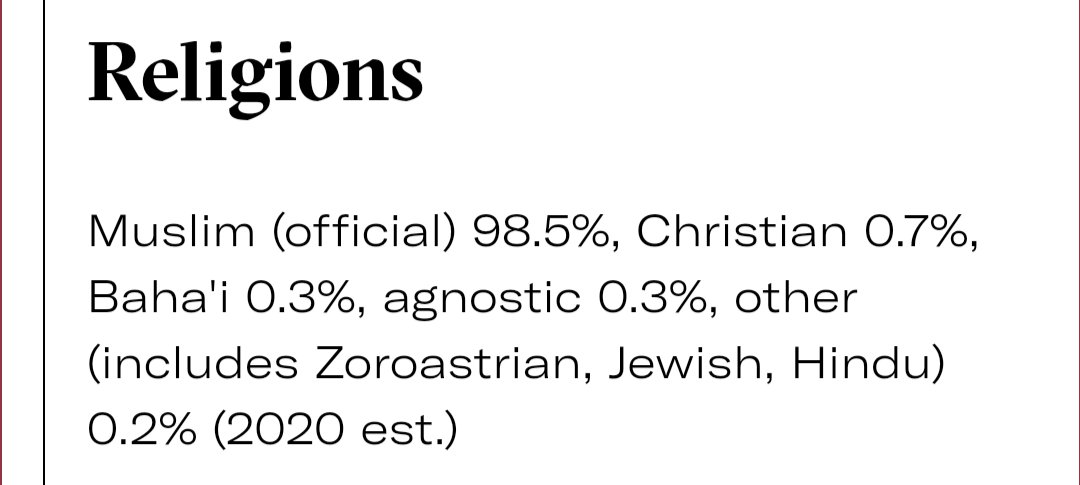Often it is falsely claimed online, that Iran is only 30% Muslim despite its government being an Islamic Republic, this thread will aim to refute this notion. Analysing statistics from different research polls and surveys. 

The figures from the "Gamaan 2020 survey" although Shiite Muslim being still the religion with the highest percentage, there are various issues with the survey that will be discussed below. 

The sample of "50 thousand" internet users is in no way even close to the population of Iran during 2020 87.29 million. Gamaan themselves admit 10% of respondents didn't even live in Iran. But let's go forward. 

The trope that Iranians are majority atheist is also another misleading thing to say as the Gamaan survey itself says that overwhelmingly the 50k Iranian people surveyed 78.3% of them believe in God. 

The geographical distribution of the respondents too, one sees a very Tehranesque theme with Tehran being over represented and the survey seems to neglect Rural areas of Iran. 

All in all the "Gamaan" survey seems methodologically flawed, that isn't to say that secularism & atheism isn't present in Iran however these surveys largely misrepresent actual figures and only focus on a select section of society which are internet users in urban areas.
Three years later after the Mahsa Amini protests Gamaan released another survey "Iranian attitudes toward the 2022 Nationwide protests" February 2023...let's look at the problems with that survey... 

Again issue with the sample 42,000 people outside of Iran completing the survey. 21% of the sample aren't even in Iran and are spread out of 130 countries, this is a huge problem. 

It gets worse, look at the countries of people surveyed which are outside of Iran Canada, US, Germany, UK occupying the top positions. 

Gamaan republished surveys and in August 2023 using the February 2022 results the percentage of Shia Muslims shoots up to 56 percent. Why is this important? It indicates bias and data mishandling.




Gamaan should not be considered as a reliable source of statistics as it is an overseas entity whose figures are being used primarily for "propaganda purposes" and "psychological warfare". But they are a good source for understanding the rise of secularism in Iran nevertheless.
Putting Gamaan aside lets look at different survey results and censuses. To get a picture of the correct statistics regarding religion in Iran.
World values survey (2022) found 96.6% of Iran believe in Islam however 14.3% of them identified as not religious. This is definitely an overestimate, no one is denying a large minority of people in Iran are abandoning religion worldvaluessurvey.org/WVSDocumentati…
Official government statistics, 2011, 13 years ago, it agrees with Gamaan that Islam is still the most practiced religion but very unrealistic to say 99.4% of Iran is Muslim. 

Pew research centre (2019) 87% of Iranians pray on a daily basis, which was the second-highest percentage in Asia after Afghanistan (96%) 

Conclusion: there is a trend of secularism and atheism in Iran, however it is extremely exaggerated and to say that only 30% of Iran is Muslim which is just as absurd to say that 99% of Iran is Muslim. Surveying peoples religious beliefs is sensitive to ask, not everyone feels..
CONT...Comfortable to answer their religious beliefs. Using religiosity as a method of psychological warfare by the enemies of Iran outside and within must be recognised and must be shut down.
@threadreaderapp unroll
• • •
Missing some Tweet in this thread? You can try to
force a refresh
















